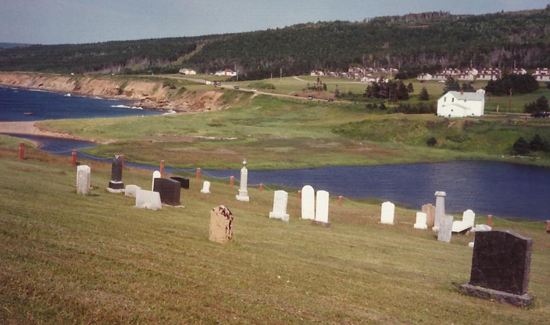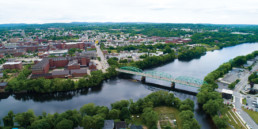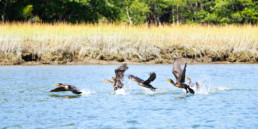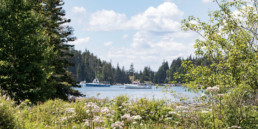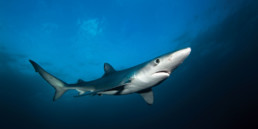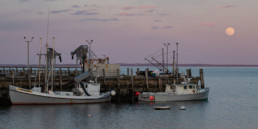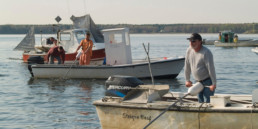The Collector of Islands
Their magical allure has carried through a lifetime
By Melissa Waterman
To get to the Lofoten Islands in Norway, you must take the ferry. But to get to the ferry you must journey by train. The train from Oslo takes 20 hours, travelling through Trondheim and the mountains to the tiny coastal settlement of Bodo. In Bodo I board the Hurtegruten, a coastal ferry that travels the entire Norwegian coastline year-round, to convey me to the small port town of Svolvær on one of the archipelago’s Arctic islands.
Christopher Columbus allegedly said after wandering about the islands of the Caribbean, “My desire was not to pass any island without taking possession, so that, one having been taken, the same may be said of all.” His was the deliberate avarice of empire; I am unclear what desire drives me.
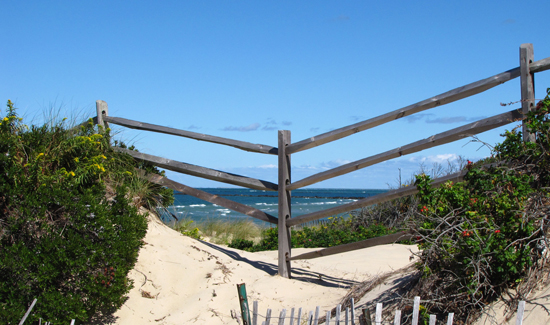
I began my collection of islands young. One summer during high school I lived on Nantucket. I found a small room for rent above a garage on a road of sand and bicycled daily to my work as a chamber maid. On my days off I peddled as far as my legs would take me to find stretches of beach unencumbered by tourists. I slid down fantastic sand dunes and loitered amid low trees listening to the surf. Through the art of trespass I made Nantucket mine.
I later lived in Ireland for a time, traveling the island with my thumb out to find the small and the hidden. A fishing boat took me to the Aran Islands where I walked on fields hand-made of seaweed and dung. I stood on sleek stone cliffs seemingly carved with a ruler and plumb bob looking westward and thought young romantic thoughts.
Another island I claimed was named Prudence. Prudence Island sits in upper Narragansett Bay in Rhode Island, a plump mitten of land filled with small homes, unregistered battered cars, and fields. At the island’s height lay a small vineyard owned by an older couple, refugees from post-war New York. They grew grapes, had a small cav to store their wine and a windmill to draw water into their home. I camped on the island and visited them often, suddenly awake to the fact that on a small island in an overcrowded state some people had achieved freedom.
As the poet Derek Walcott wrote, “Merely to name them is the prose/Of diarists, to make you a name/For readers who like travellers praise…” I wasn’t interested in the praise of anyone. Who can say why one collects islands?
I lived on Martha’s Vineyard for several years as a newly fledged adult. It is an island dipped in amber, caught in a preserve of money and fame that nearly renders it still and precious. Living on Martha’s Vineyard made me yearn for other islands less complicated. One day I found myself on Cuttyhunk, deliriously happy walking through a field of wildflowers in the sunshine, wind at my back. Another time I tromped the shore of Noman’s Land some years after the Navy ceased its bombing runs. I was part of a team picking up marine trash along the shoreline and cataloguing it for state records. We scrambled up the muddy cliffs to reach the island’s modest heights, skirting bomb craters and searching for seabirds. I sat on a rock to eat my lunch overlooking destruction blanketed in green and once again felt that giddy joy fall over me.
The British writer Robert MacFarlane writes in Landmarks that “We have come to forget that our minds are shaped by the bodily experience of being in the world – its spaces, textures, sounds, smells and habits – as well as by genetic traits we inherit and ideologies we absorb.”
Newfoundland is too vast to be recognized by the body as an island; the eastern Avalon peninsula, however, is not. There cloudberries grow in patches across expanses of barrens. Moose shuffle across the roads and along the abandoned shoreline. The fog sits off Ferryland and Placentia, ready to infiltrate and obscure these tiny towns whose houses are colored as brightly as children’s drawings. The people that I met on my travels were more like the houses than the fog: vibrant, loquacious, filled in from the edges to the center with stories and music, shaped by the rock upon which they live.
Vinalhaven, Matinicus, Islesford, Eagle Island, Frenchboro, the scattered islands of Merchants Row and Casco Bay – my island collection grew ever greater here in Maine. I would like to say that I became greater as well. A collection is not merely the objects found within a display. A collection includes time, in my case many years. Those years swirl around me like water. My islands are mine only because of the time I have spent on them, in close inspection and in the grandest of daydreams. They are mine because of the attention I paid for them.
Melissa Waterman is a Maine freelance writer who focuses on the marine environment. She often finds herself in, on, or around he water in an unending effort to augment the salt within her veins. Her stories have appeared in the Boston Globe, Maine, Boats, Homes & Harbors, and other New England publications.
